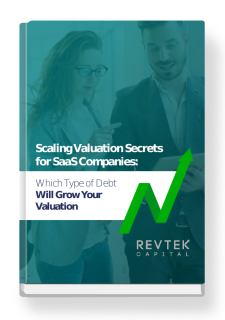Looking for the best SaaS content marketing strategy to grow your software company? A well-executed content marketing plan can generate qualified leads, build trust with your audience, and increase user conversions—all without hard selling.
In this guide, we’ll walk through everything SaaS companies need to know to create content that ranks, resonates, and drives recurring revenue. Let’s dive into the top tactics to implement right now.
What Is SaaS Content Marketing?
SaaS content marketing is a long-term strategy focused on creating and distributing valuable, relevant content to attract and convert your ideal customers. Unlike traditional advertising, this approach nurtures users through every stage of the SaaS sales funnel using educational content, SEO, and email marketing.
Whether you’re new to content marketing or need to improve your current efforts, this article will help you build a strategy that scales.
Step 1: Build a SaaS Content Marketing Strategy
Too many SaaS companies skip this step or give up too soon. A winning strategy ensures your content works toward business goals—like lead generation, product trials, or upgrades.
Define Content Marketing Goals for SaaS
Ask the right questions before launching:
- Who is your SaaS target audience?
- What actions do you want them to take?
- How will content support those goals?
- Who is responsible for creating and approving content?
- What KPIs will determine success?
Use this information to build quarterly review cycles so you can refine your strategy as you grow.
Plan a SaaS Content Calendar
An editorial calendar keeps you consistent and organized. Plan:
- Types of content (blog posts, tutorials, whitepapers, case studies)
- Publishing platforms (company blog, LinkedIn, Medium)
- Promotion strategies (email, SEO, social media)
Using tools like Trello, Asana, or Notion will help manage content workflow across your team.
Set Measurable Content KPIs
Some key content marketing KPIs for SaaS include:
- Website traffic and time on page
- Blog click-through rates
- Newsletter sign-ups
- Trial conversions from content
- Customer acquisition cost (CAC)
Tracking these metrics helps you focus on what drives real ROI.
Step 2: Align Your SaaS Content with the Sales Funnel
Each stage of the SaaS customer journey requires different types of content to guide users toward a purchase.
Top of Funnel (Awareness)
Your goal is to attract new users through helpful, keyword-rich content. Focus on:
- Blog posts optimized for SEO
- Thought leadership articles
- Infographics and social media snippets
- Podcasts or explainer videos
Top-of-funnel content should rank for industry-related searches like:
- “What is [problem your software solves]?”
- “[Industry] software best practices”
- “How to [do X] with SaaS tools”
SEO Metrics to Track: Organic traffic, impressions, bounce rate
Middle of Funnel (Consideration)
This stage focuses on building trust and moving visitors into leads. Great middle-funnel content includes:
- Downloadable lead magnets (eBooks, guides)
- Webinar invitations
- Case studies showing customer success
- Comparison posts and feature breakdowns
Encourage users to subscribe or sign up for a free trial. Use lead capture forms and gated content here.
KPIs to Measure: Email opt-ins, trial sign-ups, lead magnet downloads
Bottom of Funnel (Conversion and Retention)
These users are almost ready to buy. Help them make a decision with:
- Demo videos or live product walkthroughs
- Customer testimonials and success stories
- Special offers and limited-time upgrades
- Onboarding guides and user support content
This is where you close deals and reduce churn. Zapier’s blog is a great example of powerful bottom-of-funnel content for Saas.
Conversion Metrics: Trial-to-paid conversions, monthly recurring revenue (MRR), customer retention rate
Not every lead starts at the top. Be sure to have optimized landing pages and sign-up options available across all content levels.
Step 3: Use the Right SaaS Content Marketing Channels
Now that your strategy is in place, you need the right distribution plan to drive traffic and engagement.
Organic Search (SEO for SaaS Content)
Organic search drives the majority of SaaS website traffic. Here’s how to optimize for Google:
- Use primary keywords and long-tail variations
- Optimize H1–H3 tags with keyword-rich titles
- Add internal and external links
- Write meta descriptions under 160 characters
- Refresh old blog posts with updated stats or CTAs
Ranking for “[your SaaS category] + tools” or “best [solution] software” can bring in high-converting traffic.
Social Media for SaaS Brands
Posting to platforms like LinkedIn, X (Twitter), and YouTube helps build thought leadership and expand your reach.
Use short videos, carousels, or quote snippets to repurpose long-form content and start conversations with potential users.
See how HubSpot leverages social content on LinkedIn.
Email Marketing for Lead Nurturing
Email is a must-have in SaaS. It’s one of the few channels where you own the audience.
Send tailored sequences like:
- Welcome series for new subscribers
- Educational series that links to blog content
- Trial expiration reminders
- Retention campaigns to reduce churn
Make it easy to segment your list by user behavior or funnel stage.
Step 4: Optimize Every Piece of SaaS Content
Before publishing, ask yourself: Is this content optimized to perform?
SaaS SEO Checklist
- Keyword research completed (focus and secondary keywords)
- Headings and subheadings are optimized
- Meta title and description added
- Image alt text with keywords
- Call to action included
- Internal links to related blog posts or product pages
Key Takeaways for SaaS Marketers
The SaaS space is competitive, and content marketing is one of the most sustainable ways to drive growth.
Start by defining your goals, building a clear strategy, and consistently publishing optimized content that meets your audience’s needs. Focus on search intent, educate through every funnel stage, and create conversion paths that work.
With the right content strategy, your SaaS business won’t just generate leads—it will build lasting customer relationships that scale.
Why Founders Choose RevTek Capital
Our approach is simple: We fund innovative founders with growing companies.
We provide growth capital ranging from $2 million to $20 million to SaaS companies generating $3 million or more in annual recurring revenue (ARR). With our funding, founders can:
- Expand into new markets and scale operations while preserving equity
- Invest in product innovation and build cutting-edge solutions
- Strengthen sales and marketing strategies for accelerated growth
- Hire top-tier talent to drive competitive advantage
At RevTek Capital, we believe founders should own more of their company at exit, not less. Unlike many venture capital firms that push for aggressive dilution, we provide capital that preserves founder equity while fueling expansion. We structure the terms to provide the capital you need, and when ready, you can add more quickly.
Looking Ahead: The Future of SaaS Funding
The SaaS industry is evolving at an unprecedented pace, with emerging technologies like edge computing, blockchain, and the Internet of Things (IoT) opening new frontiers for software innovation.
At RevTek Capital, we are committed to fueling the next generation of SaaS leaders by providing the capital and strategic support needed to turn bold ideas into market-leading companies.
If you are a SaaS founder looking to accelerate growth, let’s talk. Your success is our mission.
Let’s build the future of SaaS together.



